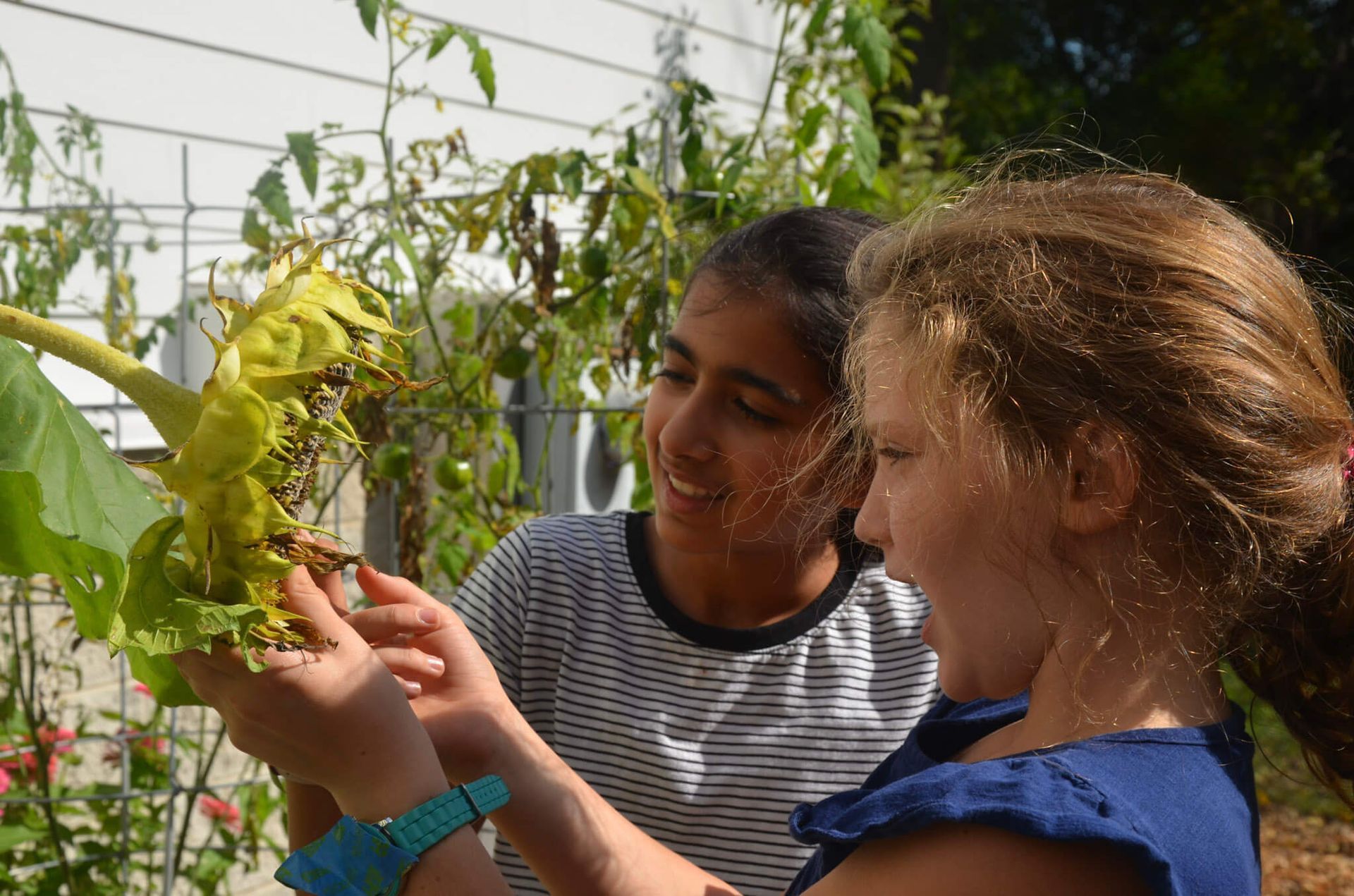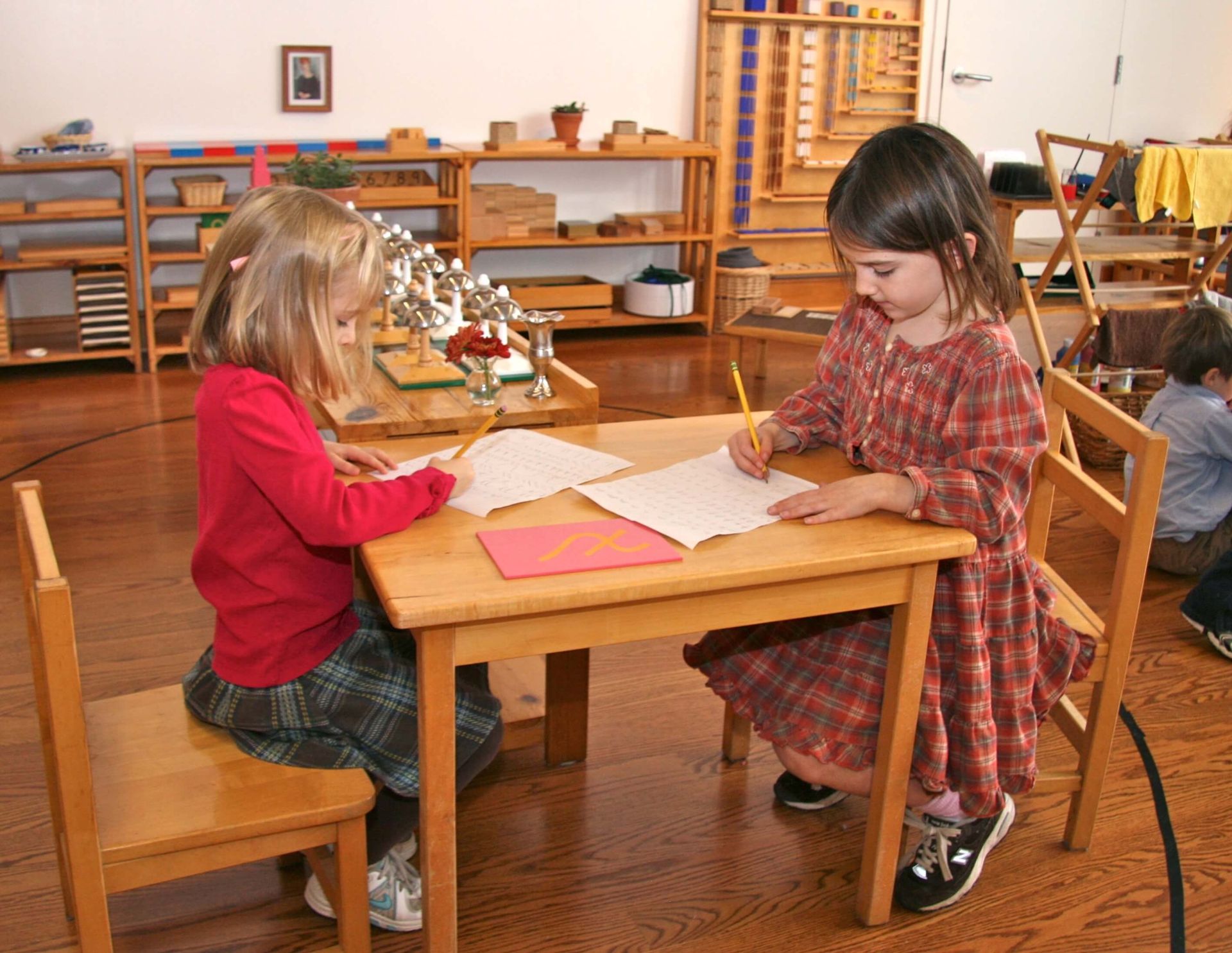
“The child must learn by his own individual activity being given a mental freedom to take what he needs…”
—Maria Montessori, To Educate the Human Potential
Learning to Organize Information: It’s About Building a Thinker
The process of learning to research and report what you found in your own words has many layers, such as flipping through pages in a book, reading for understanding, and organizing the information you find into categories as you write your first—and second—drafts. That alone is a big step, one that young children need to repeat with every paper they craft. For instance, in the previous story from Part I, the first draft two girls wrote had a stream-of-consciousness feel, with random information clumped together in the order they found it (or found it interesting!) along with a few personal reactions (“Isn’t that amazing?!!!”).
As the teacher reads through the girls’ paper with them a few days later, she discusses the sub-topics within it: here is a sentence about body parts, and here’s another one way over here about a body part…but in between are two sentences about where elephants live. On the next page is another sentence about the continents where they live, and still on another page is the types of climates they do best in. The teacher points out that in one place the girls mention that elephants can also live in zoos and how many in the United States are in zoos…so, all those sentences could be moved into one paragraph, without being broken up by the other bits of information about what they eat, how dry their skin is, how they care for their babies, and so on.
The teacher helps the children circle sections and draw arrows to rearrange their content. The girls rewrite the sentences to make a clean draft that presents the information in a more organized fashion. They get it! This process helps children organize their thoughts. By contrast, if the girls had followed a Googled, online document, they probably would have copied the order of that document, and, without multiple sources presenting different orders of sub-topics, they would have skipped this experience altogether.
Keeping it Real
Montessori teachers often find that elementary-aged children cannot produce work as well when handed sheets of pre-chosen content. Perhaps this is because the children did not search for, and gather, the information by their own efforts. Perhaps the information presented this way is too abstract for their ages. Such sheets present words without the layers of context, the time to think, and the physical layout that various collected sources of information offer. Removing these physical layers makes researching too difficult for a young child. And yet, young children are capable of thinking and working through a research process! Just as Montessori makes learning to write words possible with the Moveable Alphabet before four-year-old children can physically write all their thoughts with a pencil, this physical process of gathering and processing information into one’s own words is made possible for seven-year-old children. This is why Forest Bluff teachers deliberately refrain from jumping to sheets of information from computers to teach students how to conduct research.
Consider also that information in and of itself (such as how many babies an elephant might give birth to in a lifetime) is not nearly as important to retain for one’s intellectual growth as the process of gathering information, decoding it, organizing it, and presenting it to others. These steps build a researcher for life.
This emphasis on process is an important feature of how we teach children to do their own research at Forest Bluff School. The first goal is not to acquire the latest or most impressive information—although this will come later. The first goal is the process, with all the excitement and motivation of one’s personal interest to drive the child all the way to the finish line. The teacher does not make any of this happen; the child’s motivation and burning interest does!
What’s Behind It All? Human Development
Just as table washing isn’t really about washing a table, but more about following an order of steps, developing concentration on a task, coordinating movement with thought, and preparing the hands for writing, research (especially in the Lower Elementary Level) isn’t really about mastering any particular topic of study. Research is an avenue for a child to be motivated to practice handwriting, punctuation, spelling, sentence and paragraph structuring, syntax, and social cooperation with peers. Because it is self-directed, it also gives a child time to express their individualism and sense of identity. They remain personally connected to a topic and invested in it.
Researching in this manner appeals to the inherent nature of children ages six to twelve, because they are in what Maria Montessori identified as the “Second Plane of Development,” when they’re on a quest to connect with—and understand—society. Montessori teachers help students to reach local experts, interview adults, and go on self-directed field trips. By connecting children with people in the community––librarians, experts, field researchers, authors of books, and peers—we help children connect with humanity on a basic level. This feeds a need for their personal development, with ideal timing.
If a computer delivers information instead, we actually do the opposite: we distance the child from making this connection with real, human sources. Real connections with others ultimately helps each child to find that actively exchanging with others’ ideas and opinions through face-to-face conversations deepens their understanding, interest in, and knowledge of a topic. A child who experiences repeated positive interactions centered on social conversation finds that talking with teachers, experts, and professors can be comfortable and familiar. Conversations are a terrific way to better understand a topic, even at the university level. One doesn’t have to rely alone on the internet’s search engine.
How Does Research Evolve for Each Student?
To summarize, the purpose of research is to develop concentration, stamina, curiosity about the world, promote sustained interest in a topic, and to connect the elementary-aged children to their society and larger community by talking to librarians or experts in their fields of interest. Conducting research also fosters executive function skills such as time management, self-control (walking to the library, planning ahead), resourcefulness (knowing how to handle something going wrong without an adult), social collaboration, reading comprehension, and writing skills. These abilities grow and expand as the children get older and repeat the process with numerous research papers they produce during their elementary years.
But the steps to conducting research increase and change as the students get older, too. Widening, incremental scaffolding leads to developmentally appropriate use of online sources of information in the Secondary Level. This is when adolescents’ brains develop critical thinking skills that were not available to them when younger. Because their hands flipped through pages of books and over library shelves to take in information for many years, they are now able to sustain their attention to venture deeper into topics in a more sophisticated way. Adolescents conduct semester-long or year-long projects which we call “Independent Study Projects” in Forest Bluff’s Secondary Level. These prepare students for high school and college-level expectations. More than one graduate has told us, “Everyone freaked out in high school and college when they had to write big papers, but for me it was just like doing another ISP in my Montessori days. What’s the big deal? It’s fun!”
The Challenge for Adults
It is difficult for parents and teachers to support children to develop these research skills for themselves, just as it was challenging to help three-year-olds learn to dress themselves, prepare food for themselves, and tie their own shoelaces independently. It takes several years, moves gradually, and requires patient attention, just as all their development does. It would be far easier to just Google information for children, or to show them how to ask Google (or Alexa or any AI platform) to answer their questions. Now you understand everything that is missed when adults give in to that temptation!
One challenge is that, sometimes, information isn’t readily available on a particular topic. It may not be in the local library, in books, or among any experts in the town. Sarah Robbins, a Forest Bluff teacher, encountered this dilemma as a parent when her own daughter became interested in the Arctic National Wildlife Refuge (ANWR). Sarah had to think how best to help her daughter (a student at Forest Bluff School) access accurate information, instead of just Googling it to give the answers to her daughter.
After contemplating what to do, Sarah made a quick little Google search of her own to find some addresses and names of US Fish and Wildlife rangers at the ANWR. She then gave these to her daughter and suggested that she write and send a (snail mail) letter to them with her questions. Her daughter then wrote a letter and mailed it (which gave her practice with some great skills!).
To their surprise, her daughter received loads of information back with a personal note a few weeks later! This experience connected this Forest Bluff student with an actual person (something she’ll never forget), helped her develop more writing skills, promoted the idea of delayed gratification, and gave her the very thought that there are adults with jobs in the Arctic looking after and monitoring wildlife. Can you see how this experience deepened a child’s sustained interest in a topic, gave her confidence, and supplied connection to the real world? This all happened because her mother didn’t simply Google her question. What might have been a ten-minute process became a weeks-long one, but it was far more meaningful, profound, and developmentally rich.
Building a Researcher for Life
If the teacher had told the two seven-year-old girls, “Oh great, you want to research elephants. Here’s a worksheet of the questions to ask and the kind of information you should look for,” and then handed them a template, most of that personal interest and motivation would have fizzled. And rightfully so! For what researcher who has ever made a laudable discovery followed directions from someone else? That’s not how scientists are born. And it’s certainly not how children become inquisitive, persistent, experienced researchers.
Learning to conduct one’s own research, using the “old-fashioned” methods of gathering physical books, reading through them and deciding what to write down, then organizing, rewriting, and presenting that research to others, is a major part of every child’s elementary years at Forest Bluff. Every child learns to do this!
Why don’t we just have them do online searches or hand them printed out sheets of information? Because that’s not the way to build a researcher.
Happily, because this school’s parent community understands why this process works so well, Forest Bluff students continue to learn the old-fashioned way. When they reach the Secondary Level at age 12, their teachers show them how to properly conduct their own online searches, after they have a strong foundation from lots of motivation and experience. It’s a joy to watch this story unfold year after year. By the time they graduate, Forest Bluff students have gotten much more practice in this process than most of their peers from other programs entering high school. Montessori students get the chance to master their process for independent research, from the beginning.
They didn’t Google it. They didn’t even need a computer…Isn’t that amazing?!


